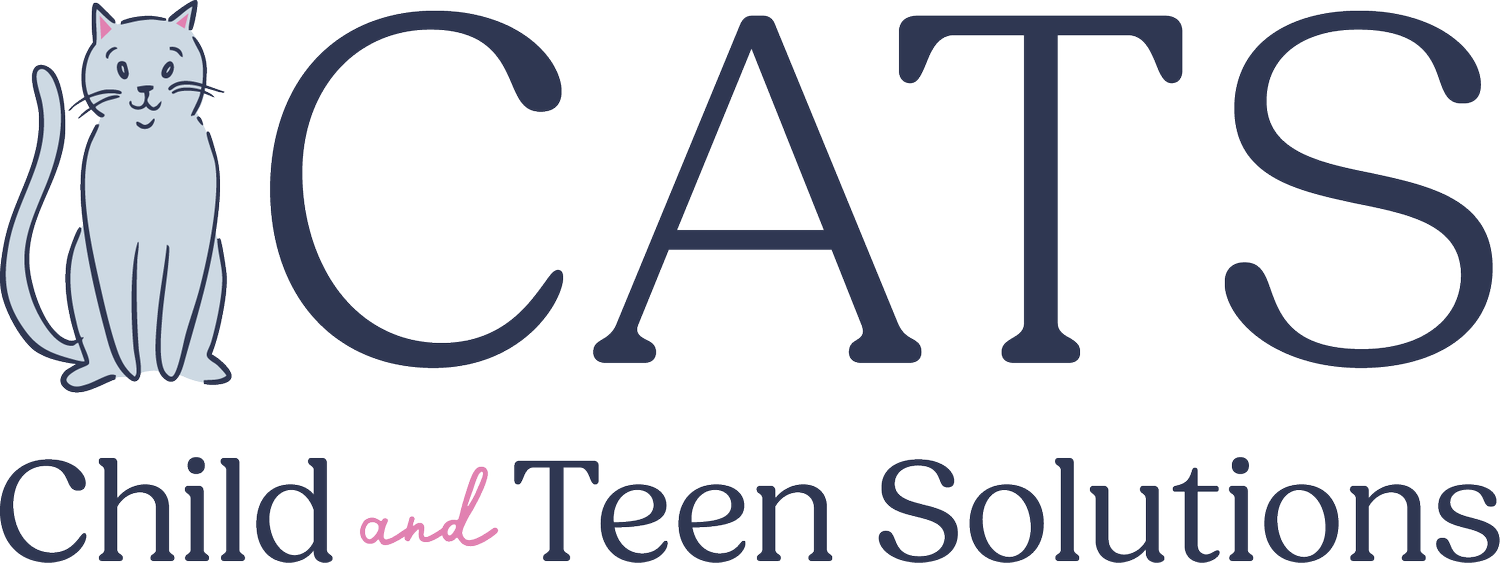Helping Kids Build Resilience: A Flexible Mindset and the Power of Self-Talk
Life throws curveballs. Whether it’s a tough day at school, a friendship that feels shaky, or a big change at home, kids face challenges all the time. As adults, we want to help them bounce back. That’s what resilience is: the ability to recover, adapt, and grow stronger through life’s ups and downs.
Resilience isn’t something kids are born with or without. It’s something they can build. And one of the best ways to help them build it is by teaching them how to think flexibly and talk to themselves in helpful ways.
What Is a Flexible Mindset?
A flexible mindset means being able to adjust your thinking depending on the situation. It’s not about being positive all the time or ignoring hard feelings. It’s about having tools to respond to different challenges in effective ways.
There are three key parts to a flexible mindset:
1. Context Sensitivity
Context sensitivity is a fancy way of saying: “Pay attention to what’s happening, and adjust your response to fit the moment.” It’s one of the most important parts of building resilience in kids. Think of it like this: if your child only has one way to solve a problem, they’ll feel stuck when that one way doesn’t work. But if they can notice what’s going on and choose a different strategy when needed, they’ll feel more successful.
It’s Like Having a Mental Toolbox
Imagine your child has a toolbox in their brain. Each tool is a different way to handle a situation: asking for help, taking a break, speaking up, staying calm, trying again, or even letting something go. Context sensitivity is what helps them pick the right tool for the job.
For example:
If a friend is upset, joking around might not be the best tool. A better one might be listening quietly or offering support.
If they’re stuck on a math problem, trying the same method over and over might not help. A better tool might be asking the teacher or trying a new strategy.
Knowing When a Strategy Isn’t Working
One of the biggest signs of context sensitivity is when a child realizes, “This isn’t working, I need to try something else.” That’s a huge skill. It means they’re not just reacting on autopilot. They’re paying attention to what’s happening and adjusting their approach.
You can help your child build this skill by asking questions like:
“What have you already tried?”
“How did that work out?”
“Is there something else you could try?”
These questions don’t tell them what to do. They they help them notice and choose. This isn’t about finding the best solution or response, it’s about building the habit of adjusting one’s responses and repeating this step as necessary.
examples of Context Sensitivity
At school: A child is trying to focus, but their usual trick of holding a fidget just isn’t helping today. They realize they’re getting more distracted, so they decide to put the fidget away and ask to move to a quieter spot. That’s context sensitivity.
With friends: A child notices that their friend is being quiet and not laughing at their jokes like usual. Instead of pushing harder, they pause and ask, “Are you okay?” That’s context sensitivity.
During a meltdown: A child is getting frustrated with a game. Normally, they’d keep playing until they explode. But this time, they say, “I need a break.” That’s context sensitivity.
How Parents Can Support Context Sensitivity
You don’t need to give a lecture. Just help your child notice and reflect. Here are a few simple ways:
Model it: Say things like, “Hmm, I thought that would work, but it didn’t. Let me try something else.”
Ask guiding questions: “What’s your goal here?” or “What’s another way to handle this?”
Celebrate flexibility: Praise your child when they switch gears or try a new approach. Say, “I noticed you changed your plan when things got tricky. Way to go!”
2. Optimism
Optimism is the belief that things can get better, even when life is hard. It’s not about lying to ourselves or adopting a Pollyanna stance. Optimistic kids are more likely to try again after failing, ask for help when they need it, and see setbacks as temporary. They don’t blame themselves for everything, and they don’t give up easily. Optimism is associated with doing better in school and in friendships. When children can hold onto hope, they are more likely to stay motivated.
3. Challenge Orientation
Kids with a challenge-oriented mindset don’t expect everything to be easy. They expect to have to work at things in order to grow. They understand that effort, mistakes, and discomfort are part of learning. Challenge orientation means seeing problems as something you can face, not something to run from. It’s the mindset that says, “This is hard, but I’m going to do whatever is needed to get through it.”
It’s About Trying, Not Perfection
Challenge orientation isn’t about having the smoothest response. It’s about showing up, trying something, and being willing to try again. Kids don’t need to have it all figured out. They just need to keep going. A child with a challenge-oriented mindset doesn’t wait until they feel confident or calm. They take action, even if it’s messy, awkward, or uncertain.
That might look like:
Asking a question, even if they’re nervous
Trying a new strategy, even if they’re unsure
Speaking up, even if their voice shakes
These moments matter. They teach kids that effort is valuable, even when the outcome isn’t perfect.
“Let’s Just Try Something”
One of the most powerful phrases you can teach your child is: “Let’s just try something.” It takes the pressure off. It shifts the focus from getting it right to getting started. And it opens the door to learning through experience.
You can model this by saying:
“We don’t need the perfect answer. Let’s just try something and see what happens.”
“That didn’t work. What’s another idea we could try?”
“You’re figuring it out as you go, and that’s how we learn.”
The Role of Self-Talk in the Flexibility Mindset
Self-talk is the inner voice we all have, the things we say to ourselves in our heads. For kids, self-talk can be a powerful tool for building resilience. Think of it like a coach inside their brain. That coach can either cheer them on or drag them down. We can help kids train that coach to be helpful, kind, and smart.
How Self-Talk Helps
Self-talk is the voice in your child’s head that helps them think through what’s happening. When it comes to context sensitivity, helpful self-talk might sound like:
“This isn’t working. What else can I try?”
“What’s really going on here?”
“What would help me right now?”
Even better, you can teach your child to use distancing self-talk. This means talking to themselves like they’re a coach or a friend. There is some evidence that this style of self-talk improves self-regulation. It’s like stepping back and seeing the situation more clearly. For example:
“Okay, Mia, take a breath. That didn’t work. What’s another way to handle this?”
“You’ve got this, Carlos. Let’s try something different.”
“This is hard, but you’re not giving up.”
“Just try this and just see how it goes.”
This kind of talk helps kids step back, calm down, and make smarter choices.
Summary
We cannot emphasize this enought: Resilient coping can look messy. It’s not about having the perfect response or getting it right the first time. It’s about trying, adjusting, and trying again. Sometimes that means distraction. Sometimes it means texting a friend. Sometimes it’s just taking one tiny step forward. What matters is the willingness to keep going. It’s the ability to stay flexible and hopeful, and to face hard moments even when the path isn’t clear.
This is what we want for kids: not polished coping, but real coping. The kind that says, “I don’t know yet, but I’m figuring it out.” And when we help kids build these skills, especially through self-talk, we’re helping them shape an inner voice that will carry them through life. A voice that says: “You’ve got this.”
Mental Health Services at Child and Teen Solutions (CATS) in Seattle
At CATS, we work with kids and families who are navigating challenges with anxiety, emotion dysregulation, defiance, or inflexibility. Our team focuses on practical strategies and evidence-based approaches that make a difference, including for children on the autism spectrum or who have ADHD. If you’re interested in learning more, please reach out through our contact page.
Additional Reading about Resilience
Bonanno, G. A. (2021). The End of Trauma: How the New Science of Resilience Is Changing How We Think About PTSD. Basic Books.
Kenworthy, L., Cannon, L., Alexander, K., Werner, M. A., & Anthony, L. G. (2020). Solving Executive Function Challenges: Simple Ways to Get Kids with Autism Unstuck and on Target. Brookes Publishing.
Seligman, M. E. P. (2006). The Optimistic Child: A Proven Program to Safeguard Children Against Depression and Build Lifelong Resilience. Houghton Mifflin Harcourt.



